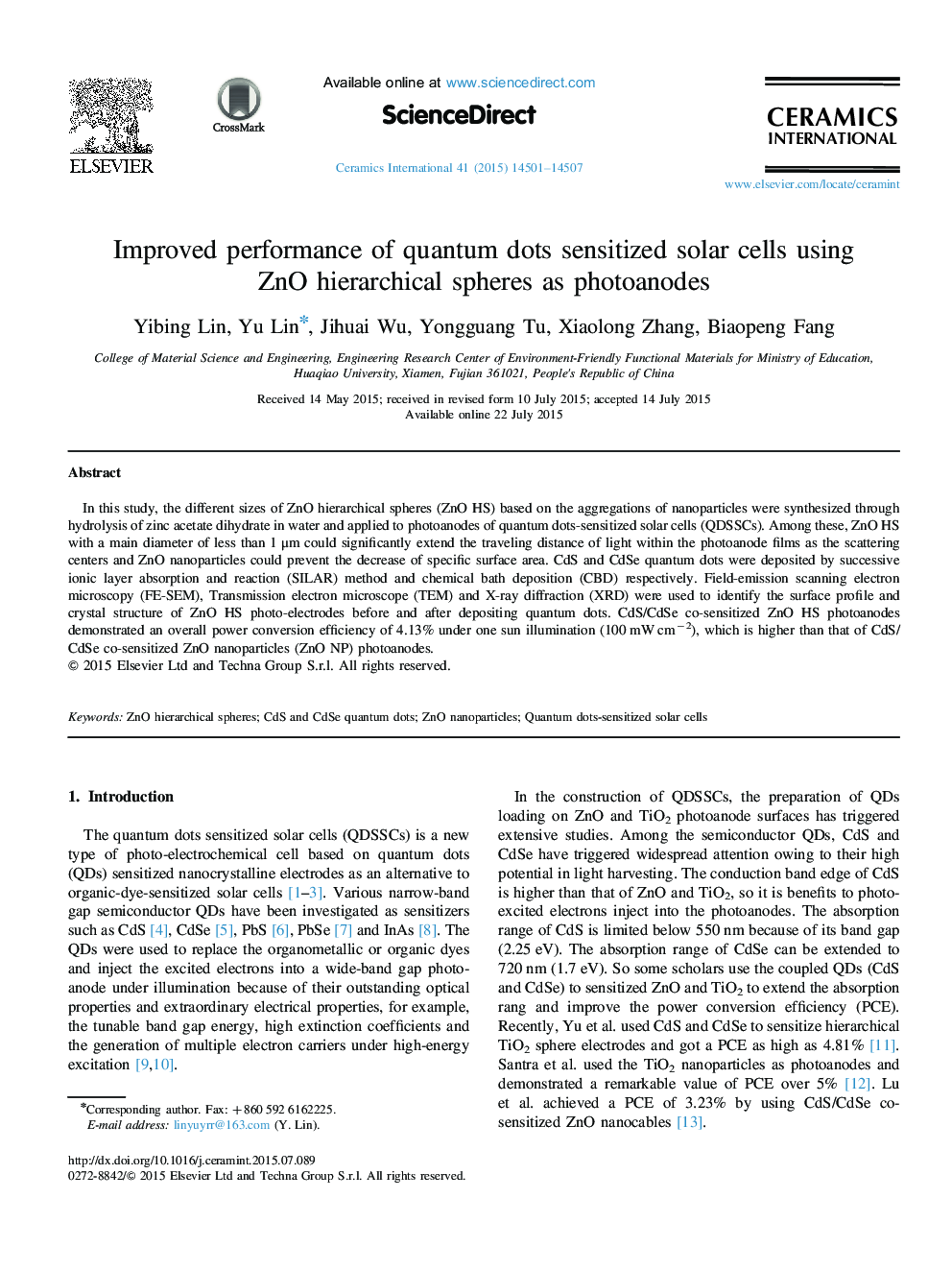| Article ID | Journal | Published Year | Pages | File Type |
|---|---|---|---|---|
| 1459369 | Ceramics International | 2015 | 7 Pages |
In this study, the different sizes of ZnO hierarchical spheres (ZnO HS) based on the aggregations of nanoparticles were synthesized through hydrolysis of zinc acetate dihydrate in water and applied to photoanodes of quantum dots-sensitized solar cells (QDSSCs). Among these, ZnO HS with a main diameter of less than 1 μm could significantly extend the traveling distance of light within the photoanode films as the scattering centers and ZnO nanoparticles could prevent the decrease of specific surface area. CdS and CdSe quantum dots were deposited by successive ionic layer absorption and reaction (SILAR) method and chemical bath deposition (CBD) respectively. Field-emission scanning electron microscopy (FE-SEM), Transmission electron microscope (TEM) and X-ray diffraction (XRD) were used to identify the surface profile and crystal structure of ZnO HS photo-electrodes before and after depositing quantum dots. CdS/CdSe co-sensitized ZnO HS photoanodes demonstrated an overall power conversion efficiency of 4.13% under one sun illumination (100 mW cm−2), which is higher than that of CdS/CdSe co-sensitized ZnO nanoparticles (ZnO NP) photoanodes.
